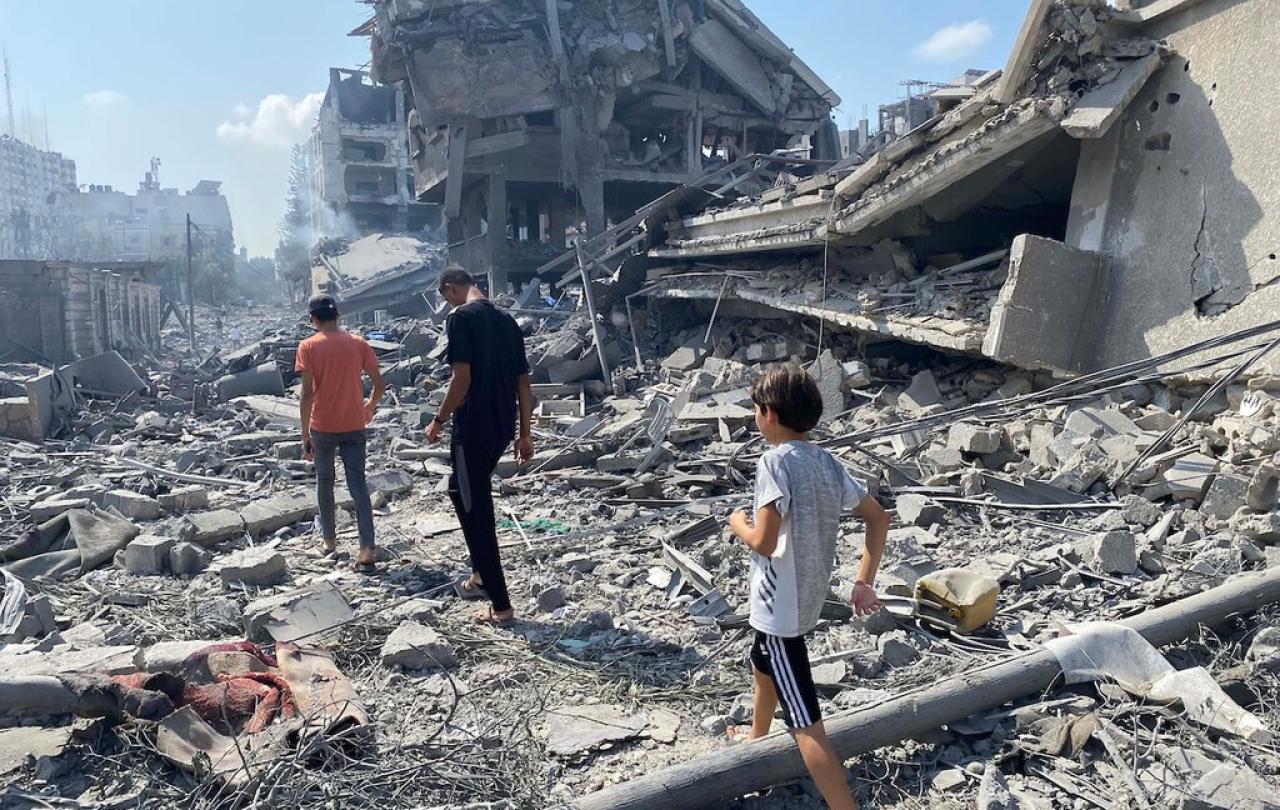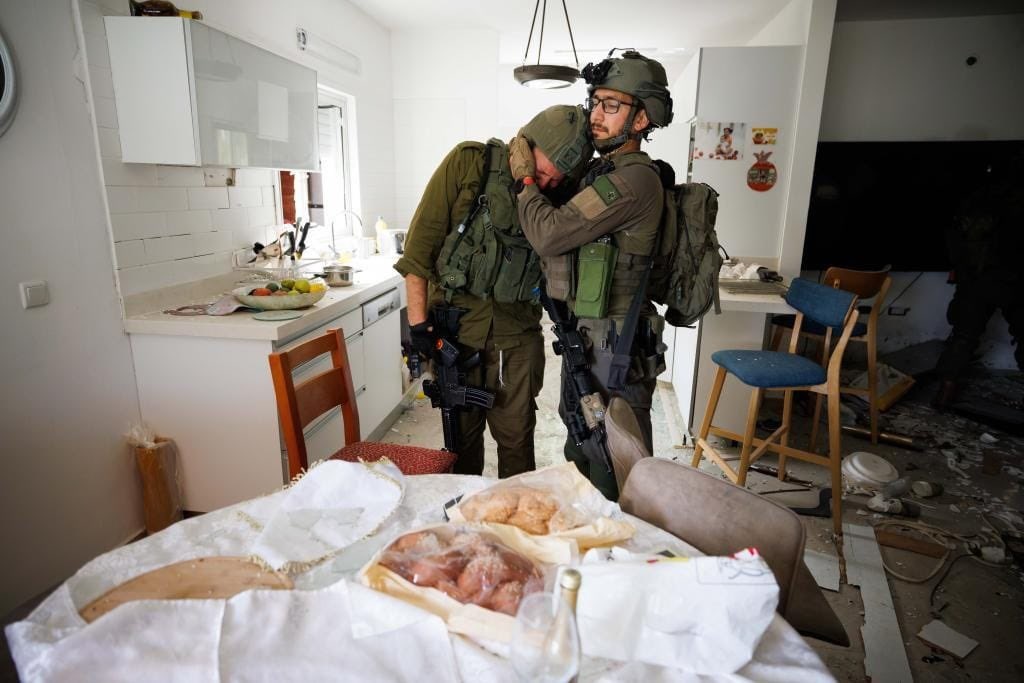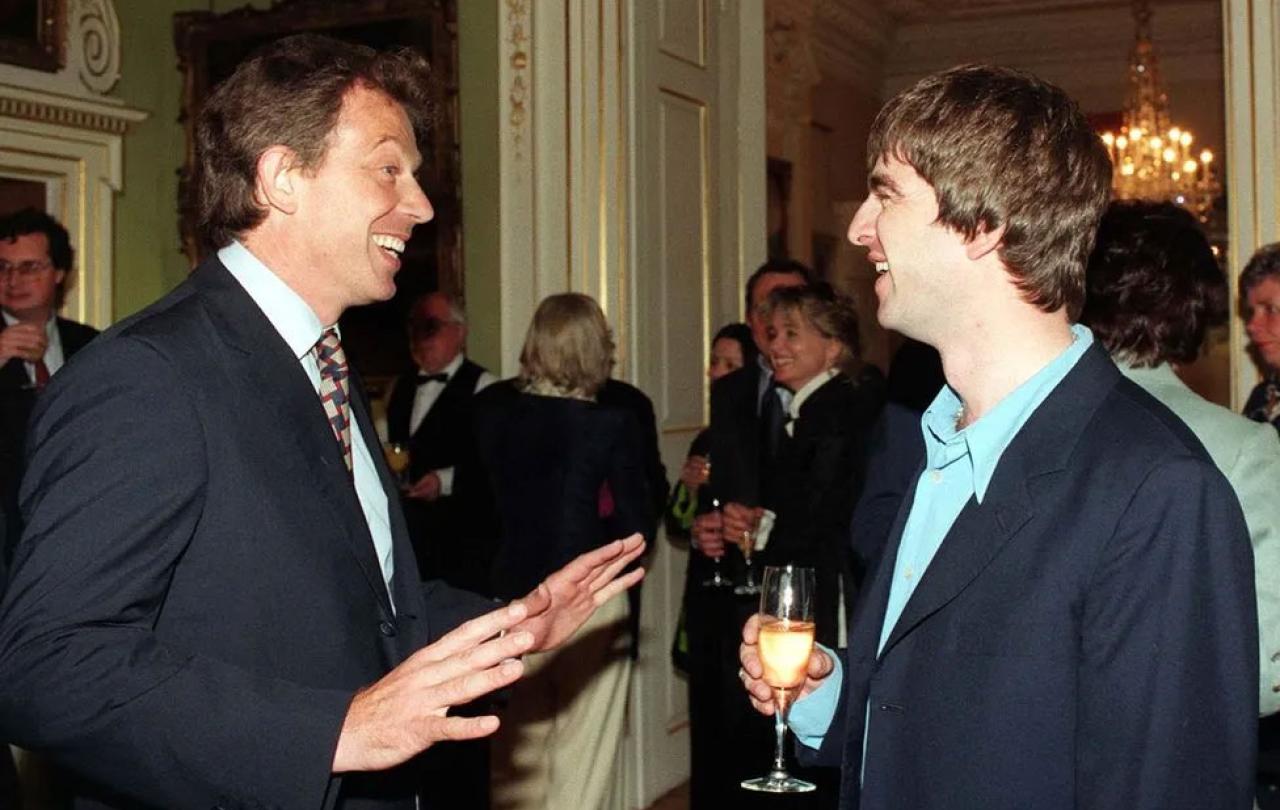
How can you say something sensible about the horror that has unfolded in Gaza and southern Israel? The actions of Hamas on October 7th were deplorable. Whatever the perceived justice of a cause, using rape as a weapon of war, kidnapping and killing babies and children, parading terrified kids as trophies of war in a pre-meditated campaign is abhorrent and indefensible. However sympathetic to the Palestinian cause, surely no-one who can imagine the terror felt by teenagers taken hostage, parents fearing what is happening to their children, or the notion of cutting the head off a fellow-human being can celebrate the actions taken by Hamas. The irony of western liberals expressing loud support for Hamas, an Islamist group that is fundamentally opposed to all the ideals of western liberalism is a strange quirk of our confused contemporary moral life.
Of course, these developments need to be seen in the light of the long-running hostility between Palestinians and Israelis, and their supporters elsewhere in the world. The issue cuts right along the already existing fissure of the culture wars, with those on the left generally supporting the Palestinians, sometimes veering into outright anti-Semitism, as the Labour party has discovered, and those on the right supporting Israel, sometimes veering into uncritical support of any action by the current Israeli government – a concession few would offer to any other national government worldwide.
The result is a depressingly familiar pattern. Since then, Gaza has endured constant bombardment, food and power shortages, death, destruction and huge suffering. The infrastructure of the enclave has been destroyed yet again, although more severely this time, leaving the problem of rebuilding hospitals, schools, houses, sewage systems that take years to construct. The people who suffer, like the Israelis who have had loved ones cruelly taken from them, are the ordinary people of Gaza. It may lead to the satisfaction of having punished the perpetrators, but will leave behind a legacy of continued hatred and resentment of Israel that will only erupt again in a decade or so’s time.
The idea that Nelson Mandela would one day wear a Springbok rugby shirt, the symbol of the oppressor, was unthinkable for the young ANC activist – as unthinkable as an Israeli Prime Minister wearing an Arab keffiyeh, or an Arab leader waving an Israeli flag.
Successive world leaders, American Presidents and international commissions have tried to solve this most intractable of global problems. And failed.
Yet other seemingly intractable problems have managed to find a way forward. Tensions between Protestants and Catholics in Northern Ireland haven’t gone away but the violence that accompanied them has largely ceased. Racial inequalities in South Africa remain, but apartheid as a policy is discredited, and again, the threat of violence has diminished.
The common denominator in these places where deep divisions have found some resolution, is a new, re-imagined and bold leadership - on both sides of each dispute. It required a willingness to think the unthinkable and do the undoable. In South Africa it was the courageous and mould-breaking leadership offered by both Nelson Mandela and FW de Klerk. Both did things unimaginable in their respective camps beforehand. The idea that Nelson Mandela would one day wear a Springbok rugby shirt, the symbol of the oppressor, was unthinkable for the young ANC activist – as unthinkable as an Israeli Prime Minister wearing an Arab keffiyeh, or an Arab leader waving an Israeli flag. The idea that FW de Klerk would dismantle apartheid, free Mandela and fully back an election that he was likely to lose to the ANC was again inconceivable when he took power as Prime Minister in 1989.
Similarly in Northern Ireland, the idea of Ian Paisley the embodiment of Protestant ‘No Surrender’ and Martin McGuiness, second in command of the IRA in Derry at the time of Bloody Sunday in 1972, shaking hands and sharing power was literally unimaginable when the troubles were at their height. These were all flawed men, each with some measure of blame for the suffering involved in their countries, yet who saw a better way and had the courage to take it.
Israeli soldiers console each other while searching a home attacked by Hamas.

As is often observed, if the Palestinians had had wiser leaders, there might have been an independent Palestinian state years ago.
Of course, these very public gestures of reconciliation took years of careful negotiation and sensitive diplomacy to achieve. Yet they happened. And they happened because these leaders gradually recognised that the path they were walking down would only lead to ongoing mutual destruction, continued conflict and suffering. As the saying goes, an eye for an eye makes the whole world blind.
This is what has been lacking in the Israel-Palestinian conflict. The Palestinian people have been badly let down by the ineffectiveness and corruption of Fatah, and the senseless Islamist terror of Hamas, exploiting the understandable sense of injustice in Gaza in particular for violent ends. Hindsight is a great thing, but if the Palestinians had had wiser leaders, there might have been an independent Palestinian state years ago, whether through the UN Partition Plan in 1947, which offered 46 per cent of the land to an Arab state, in the 1990s through the Oslo Accords or other opportunities in between.
On the Israeli side in recent years, Prime Ministers like Ariel Sharon and Benjamin Netanyahu have played on the (to be fair, often justified) fear of Israelis, to offer themselves as the security candidates who can keep Israel safe by building a wall or enact tight border controls around Palestinian communities, restricting their movement, as if long-standing Palestinian resentment at the loss of their land will just go away one day if you keep the pressure on long enough.
If his vision of Zionism had won out over the more aggressive version of David Ben Gurion, might this long history of conflict have been avoided?
There have been glimmers of hope. In the lead up to the creation of the Jewish state in 1948, the Zionist philosopher and politician Martin Buber argued for the right of Jews for a homeland, yet also believed the moral test of that homeland was going to be the way they would treat their Arab neighbours. For him, the call on the new Jewish state was bigger than just to provide a safe place for Jews to live, but, in alignment with the Old Testament call on the people of Israel, was to be a blessing to the nations. As he wrote in his visionary book A Land of Two Peoples:
“A true Zionist wants not to rule over his Arab brothers but to serve together with them.”
If his vision of Zionism had won out over the more aggressive version of David Ben Gurion, might this long history of conflict have been avoided?
In the 1980s, Anwar Sadat moved from being the leader of Egypt’s attack on Israel in the Yom Kippur war of 1973 to the architect of a ground-breaking peace treaty with Menachem Begin, Israel’s Prime Minister at the time. Later still, the Oslo Accords of the 1990s offered the possibility of a resolution – land for peace. Yitzhak Rabin and Yassir Arafat shook hands on the White House Lawn, as hopes began to rise of a new dawn for the Middle East.
Yet in both cases it cost these leaders their lives. Sadat’s assassination by an Islamic extremist in 1981, Rabin’s assassination by a Jewish militant in 1995 and the subsequent refusal of both sides to build on these delicate beginnings effectively put an end to the fragile hopes for peace.
Over many visits to that extraordinary land, I have experienced two communities with much in common, living alongside one another, yet with little direct interaction, and often living in fear of the other. Many Jews believe all Arabs want to kill them. Many Gazans think all Israelis want them dead. Of course, some do on both sides, but most people simply want to live in peace without the threat of explosions or being killed, or home demolitions and feeling like second class citizens.
If I have a prayer for the land of Israel/Palestine, it is for bold, imaginative leaders. There was once such a Jewish leader in Israel. There were at the time, as now, fights over who really owned the land - the Jewish people with their roots in the story of Abraham, Moses and King David or the Gentile Roman empire, with might on their side. The question of how should you deal with your enemy was a live one. Different Jewish groups argued that you should hate the Gentile enemy and kill them (the Zealots), blend in with them (the Herodians), avoid any contact with them (the Pharisees), or feel superior to them (the Sadducees). Jesus of Nazareth came up with the crazy idea that you should love them and pray for them, and thus be true children of the God who made both you and your enemy.
Unrealistic? Maybe. And also today, perhaps much too early to talk about such a thing when emotions are so raw. Such a call doesn't deny Israel’s right to reasonable self-defence and the Palestinian right to legitimate protest. But this was the basic idea that lay behind the revolutionary leadership of Nelson Mandela, FW de Klerk, Martin McGuiness and Ian Paisley. Here were leaders who were prepared to take the bold path away from violence and bloodshed.
In each case, it took leaders on both sides to find a way forward. A commitment to such a path on one side alone is not enough. If that is all you have then you get killed, just as Jesus did. And of course, such a path does not avoid the possibility of suffering and even death, as both Sadat and Rabin found out. Yet, in the strange mystery of God’s working, even that - especially that - was the path to peace.
In the depressing cycle of hatred and death, the grieving families of Israel and Gaza, the weeping sons and daughters of Isaac and Ishmael, we can only pray for new leaders who will walk the difficult yet fruitful path of making enemies into friends.





